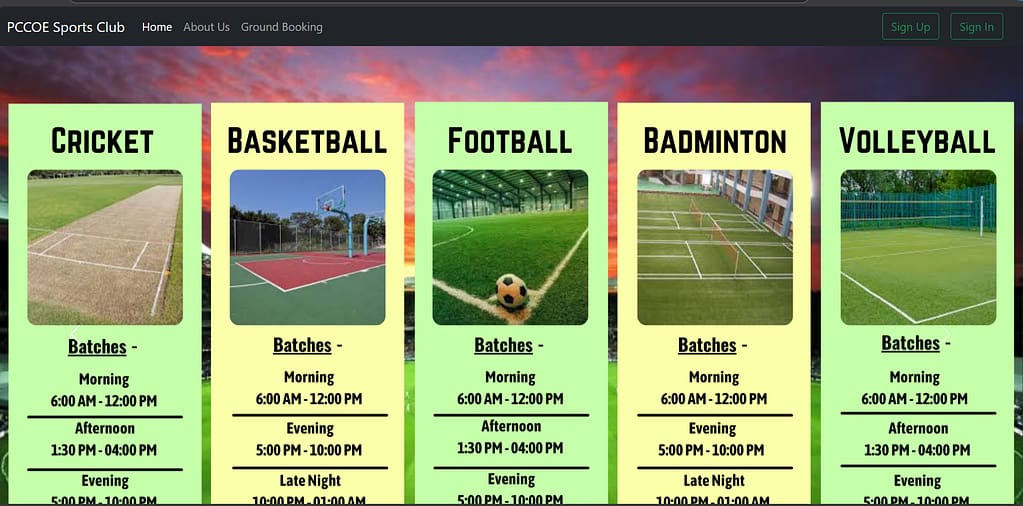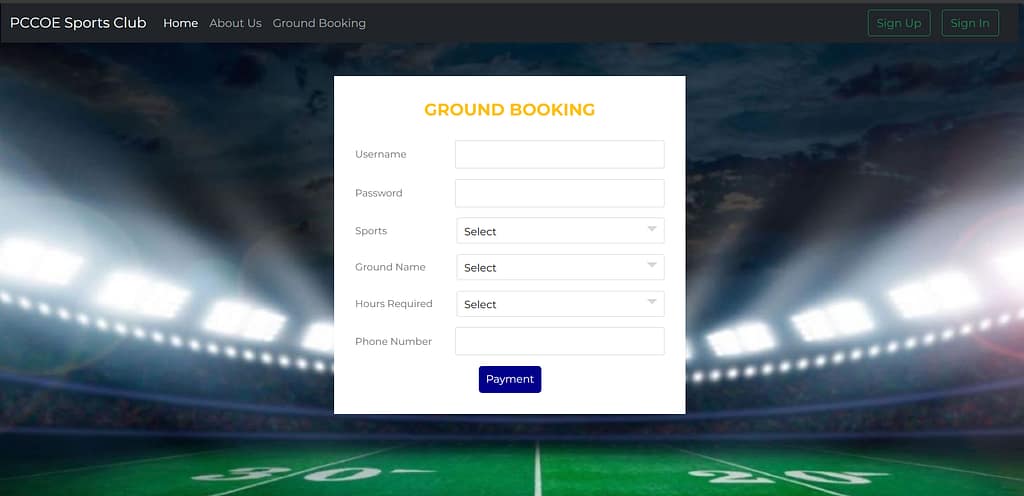
Sports Club Management System With Free Code
Sports Club Management System
In today’s fast-paced world, managing a sports club efficiently requires more than just passion—it demands an organized system. From handling memberships to managing events and finances, sports clubs need streamlined solutions to ensure smooth operations. This is where a Sports Club Management System comes in. By automating and centralizing essential functions, these systems help club administrators focus on what matters most—enhancing the sporting experience for members.
PHP PROJECT:- CLICK HERE
Table of Contents
Key Features
- Membership Management:
Efficiently manage memberships, including registration, renewals, and cancellations. The system allows users to sign up, make payments, and access club-related information through a secure portal. - Scheduling and Event Management:
Plan training sessions, tournaments, and club events. Coaches and members can access real-time updates, view schedules, and even get notifications for upcoming events. - Communication Tools:
Seamless communication between administrators, coaches, and members through messaging or email notifications. These tools ensure that everyone stays informed and connected, which enhances the overall experience. - Financial Management:
Automate payment processing for membership fees, event registrations, and merchandise purchases. Financial reports help administrators keep track of income and expenses, making budgeting easier.
Advantages of Implementing
- Enhanced Efficiency:
By automating administrative tasks, you reduce the time spent on manual processes, allowing more focus on club development and member engagement. - Improved Communication:
A central communication platform helps to ensure that important announcements, schedule changes, or reminders are shared in real-time, reducing confusion and enhancing coordination. - Better Financial Control:
With integrated payment and financial tracking features, clubs can easily manage their cash flow, avoid missed payments, and ensure transparency in transactions. - Increased Member Satisfaction:
A streamlined experience for members, from registration to event participation, improves their overall satisfaction, leading to higher retention rates. - Data-Driven Insights:
Access to performance data, member participation trends, and financial reports allows club administrators to make informed decisions that can drive growth.
Step-by-Step Guide
Here’s a brief overview of the process you’d follow if you’re looking to develop a Sports Club Management System in Python:
1. Set Up the Environment
Start by setting up a Python development environment. You can use frameworks like Django or Flask for web applications, which provide robust support for database integration and user management.
2. Design the Database
Define your database schema based on the features you want. Key entities might include:
- Members: Member profiles, including personal details, membership status, and payment history.
- Events: Information on upcoming events, training sessions, or tournaments.
- Payments: Track fees, invoices, and payments made by members.
- Performance: Record data on members’ sporting activities, stats, and achievements.
3. User Interface Development
Build a user-friendly interface that allows both administrators and members to easily access the system. Use HTML, CSS, and JavaScript for the frontend, and link it to the backend using Django or Flask. You can implement templates for different user roles like club members, coaches, and administrators.
4. Implement Core Functionalities
- Member Registration and Login: Utilize Django’s integrated user authentication mechanism to oversee member enrollments, logins, and profile modifications.
- Event Scheduling: Build functionality that allows administrators to create, update, or cancel events, and for members to view and register for them.
New Project :-https://www.youtube.com/@Decodeit2


Source code
Sports Club Management System In Python WITH SOURCE CODE: CLICK THE BUTTON BELOW
How To Run The Project
- Step1: Extract/Unzip the file
- Step 2: Simply, double click on p1.py file and you vs code have your code ready now you can run it.
Share this content:







Post Comment